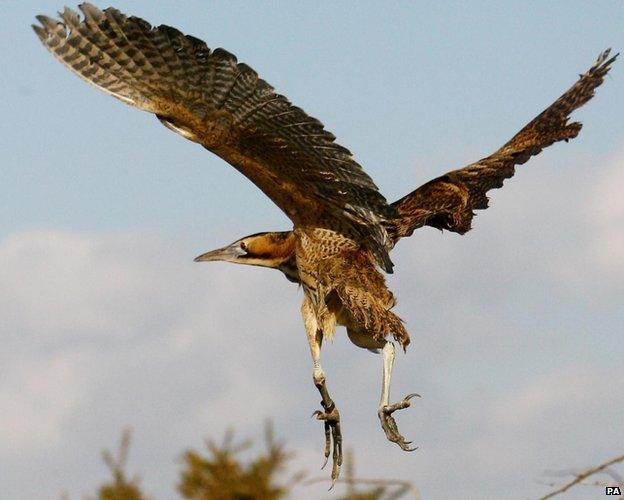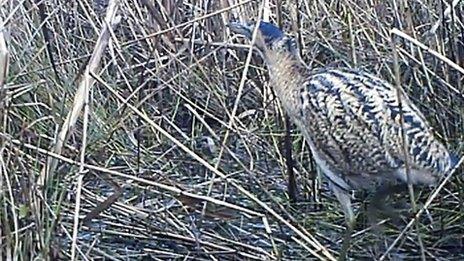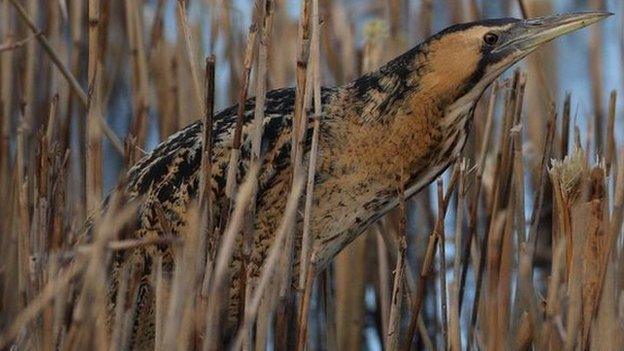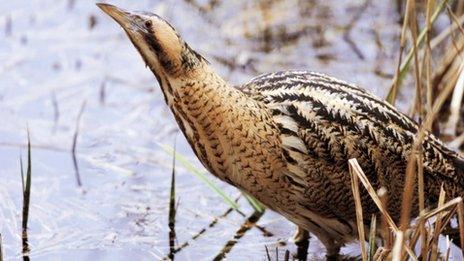Rare bittern population highest in Somerset
- Published

Twenty male bitterns have been recorded at Ham Wall nature reserve this year
Somerset is home to England's largest bittern population, the Royal Society for the Protection of Birds has said.
In its latest survey, the RSPB said 20 males of the rare species had been recorded "booming" at Ham Wall nature reserve near Glastonbury.
The elusive heron-like bird became extinct in the UK in 1886. The figures show the UK population is now at its highest since the 19th Century.
Experts say the recreation of reedbed habitat has led to the increase.
Bitterns are well camouflaged and hard to spot, but mating males can be counted from their loud, distinctive boom-like call which carries several miles across marshland.
The survey recorded 140 booming males across 61 sites in the UK this year, up from just 11 males at seven sites in 1997.
'Threatened species'
The RSPB's Martin Harper said: "Thanks to protection under European laws and key partners working together, bittern numbers have been gradually climbing since 2000.
"Bitterns needed conservation on a country-wide, landscape scale and without the support of the EU's Birds Directive, which protects all European wild birds and the habitats of listed species like the bittern, this would not have been possible.

The bird behind the boom
Shy, secretive birds - more likely to be heard than seen
The male's loud, booming mating call can be heard over 2km (1.2 miles) away
One of the most threatened bird species in the UK - 140 booming males recorded at 61 sites in 2014
They move silently through reeds at the water's edge looking for fish, and also eat amphibians and insects
Prized as a medieval banquet dish and hit by hunting and the loss of its reedbed habitat, became extinct in the UK in 1886
Source: RSPB, external and BBC Nature

"The bittern success story should give hope that it is possible to recover threatened species and that it makes sense to protect the laws that protect nature."
Bitterns recolonised the Norfolk Broads in 1911, but while numbers rose until the 1950s they then plummeted to a 20th Century low in 1997.
Many of the sites where bitterns have been counted this year are current or former gravel pits, brick pits or open coal mines where reedbeds have been restored, the RSPB said.
- Published24 December 2013

- Published16 November 2013

- Published16 April 2012
